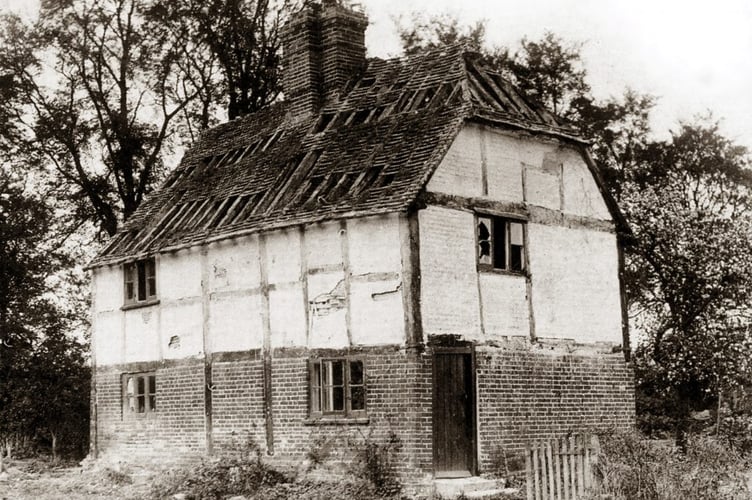“MODERN development spares no thought for the past, and the old must eventually must give way to the new.”
These were the words in the introduction to a story in the News & Mail in 1952 about an old timber-framed thatched cottage that had been demolished to make way for Woking Urban District Council’s Elmbridge Estate of 300 homes.
The story noted: “The old cottage was one of those typical white walled buildings with leaded windows, beams of timber across the walls and thatched roofs, which can be seen throughout Southern England.
“It was probably built in the late 14th or early 15th century and inhabited by one of the workers at the nearby fulling mills. At the mills, which date back to the 13th century, cloth was cleaned by Fuller’s earth and trodden in a trough by ‘walkers’ or ‘fullers’ – hence the origin of the two family names.”
By the 1900s the cottage was a farmhouse, and the report added: “At one time the occupants paid no rent because the owners could not be traced. In those days the area surrounding the cottage was one of wheat fields and grazing land.”

The story also mentions: “Perhaps the last link with the mills locally is Elm Bridge Cottage, in Kingfield Road.” And this cottage does indeed exist today, now called Elm Cottage.
It may not be known exactly how many of these old buildings there once were in the Woking area. Those that were demolished within the last 100 years have perhaps been recorded and in some cases photographed.
A photo exists of Blackness Farmhouse dating to 1908, shortly before it was pulled down. Featured in Alan Crosby’s book, A History of Woking, the author writes it stood roughly where the bowling green in Woking Park is today.
It was of a timber frame and infill of small handmade bricks, which were typically lime-washed.

In his book, Tales of Old Surrey, Matthew Alexander (former curator of Guildford Museum and now the town’s Honorary Remembrancer), writes about timber-framed houses and states that a good many do indeed survive.
He writes: “Surrey is blessed with a large number of fine timber-framed houses. While there is little suitable building stone, the oak woodland that used to cover much of the county provided the ideal building material, so sturdy and durable that most of the houses built three or four centuries ago are still standing and are still occupied as homes. The majority, that is, in rural areas; but in towns many have been demolished as pressure on town centres led to re-development. A surprising number still survive, however ‘updated’ by adding a facade in Georgian times when timber framing was thought old fashioned and uncouth.”
Thanks go to reader Mark Coxhead who found the 1952 story in back copies of the News & Mail on microfilm at the Surrey History Centre and who took the photo of Elm Cottage this summer.
The Peeps page will feature more lost timber-framed and similar buildings in a future edition.
If you have some memories or old pictures relating to the Woking area, call me, David Rose, on 01483 838960, or drop a line to the News & Mail.
David Rose is a local historian and writer who specialises in what he calls “the history within living memory” of people, places and events in the west Surrey area covering towns such as Woking and Guildford. He collects old photos and memorabilia relating to the area and the subject, and regularly gives illustrated local history talks to groups and societies. For enquiries and bookings please phone or email him at: [email protected]




